Chess Tactics is a move or a combination of moves that pose one or more instant dangers to an opponent. Most often, these threats are material gains, checkmate threats, and colossal positional advantage.
The goal of these moves is to force the opponent to make a concession, which could be anything from losing material to conceding control of a key square on the board.
Tactics are more immediate and practical, while strategy is typically a defining end product of tactics. Chess tactics empower chess strategy.
12 Popular Chess Tactics For All Levels
- Pin
- Fork
- Skewer
- Battery
- Discovery Attack
- Undermining
- Interference
- Underpromotion
- Domination
- Sacrifice
- Endgame Tactics
- Tempo Tactics
- X-Ray
Before going too far, check out these videos to see these popular chess tactics in action:
1. Pin
A pin is any chess tactic that roots a piece to a square due to several consequences if it leaves that square. Only long-ranged pieces can perform a pin. Hence, a knight, a king, and a pawn cannot execute a pin.
There are four types of pins;
Absolute Pin

This type of pin is executed when the rooted piece shields the king from the line of fire. It is illegal for a piece in an absolute pin to move because the move would expose the king to a check. A piece in an absolute pin can not move even if it wants to.
Relative Pin
A relative pin is executed when the rooted piece shields any other piece but the king. Usually, the piece being shielded is of more value than the pinned piece.
For instance, a knight on f3 could be pinned to a rook on d1 by an enemy bishop on g4. The knight here is in a Relative Pin.
Partial Pin
A piece in a partial pin can still move along that diagonal, file, or rank in which it is pinned to the king. A partial pin can occur when a rook pins either a rook or a queen to the king. At the same time, the bishop can pin another bishop or a queen diagonally to the king.
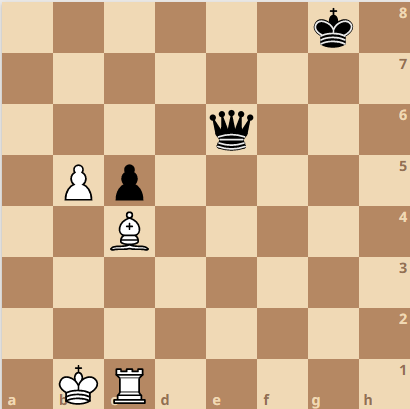
In most cases, pieces that execute a partial pin are captured to compensate for the pin with a tempo, especially if the pinning piece is protected by its king.
Situational Pin
This type of pin doesn’t involve a piece being pinned to another piece. A situational pin keeps a piece rooted to a square because of threats like checkmate, an advantageous tactic, or a controlling square.
Therefore, moving a piece in a situational pin is legal, but the consequence might be costly.
Lastly, all pieces in absolute and partial pins lose their defensive abilities.
Unpinning
This move is an act of restoring the freedom of movement of the pinned piece. A piece can be unpinned by either moving the valuable piece behind it, capturing the pinning piece, or neutralizing the threat (as in situational pin).
Learn more here: What is a Pin in Chess? A Beginner-Friendly Guide
2. Fork
A fork tactic either attacks pieces, squares, or both in one move. A fork is simply delivering two or more threats in one turn. It can be classified as a Double Attack in chess.
All pieces on a chessboard can execute a fork, including the pawn and the king. A fork is primarily attributed to a knight because it has the potential to deliver four or more threats in a single move.
And a fork is also closely attributed to a knight because its movement is often hard to contain, especially among amateurs.
A fork is one of the most commonly used tactics in chess, and it gets its name from the prongs of a fork.
Grand Fork
A Grand Fork is a knight move that attacks both rooks, the queen and the king, in a single turn. A grand fork is a rare sighting in chess and typically occurs among amateurs.
Learn more here: What is a Double Attack in Chess?
3. Skewer
A skewer is another common chess tactic similar to a pin, but in the case of a skewer, the more valuable piece is attacked directly, and it moves out of the line of fire for the less valuable piece behind it to be captured.
Again, only long-ranged pieces like queens, rooks, and bishops can execute a skewer.
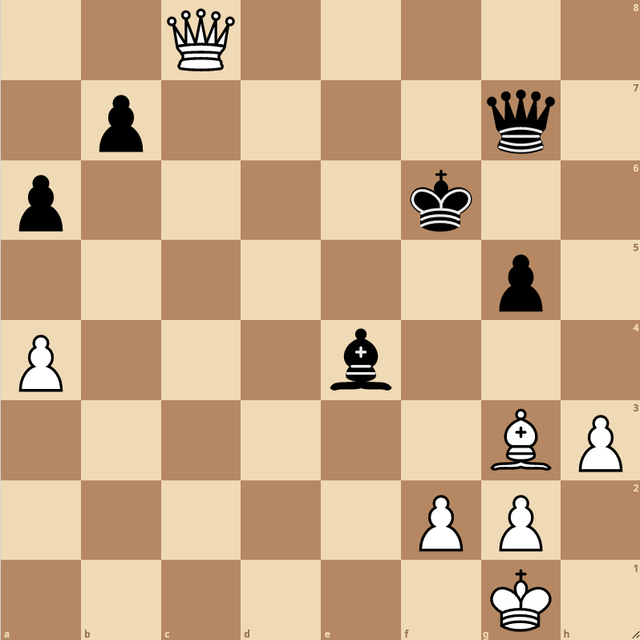
A skewer is successful when the more valuable piece cannot both move out of the line of fire and successfully protect the less valuable piece behind it.
A skewer can also be defended by using a tempo move, such as moving either of the attack pieces to a square that delivers a greater threat, such as a check.
For instance, if a bishop skewers a queen, the attacked player must look for a favorable check to escape the skewer.
Learn more about the skewer here: X-ray Attacks vs Skewers
4. Battery
A battery is a tactical set-up between pieces that creates an extra punch or reinforcement in an attack. In a battery, two pieces harbor a close connection on a rank, a file, or a diagonal.
Batteries, like pins and skewers, can also be exclusively executed by long-ranged pieces, which means a king, a knight, or a pawn cannot form a battery.
There are four common types of batteries:
- The Rook-Rook battery
- The Queen-Rook battery
- The Queen-Bishop battery
- The Alekhine Gun
The Rook-Rook battery

This type of battery is the most commonly found in chess, with players typically trying to control the 7th rank or an open file.
The Rook-Rook battery operates on files and ranks and can be seen in checkmate patterns like the Blind Swine Mate.
The Queen-Rook battery
This battery is extremely powerful in files and ranks and causes significant danger if not properly managed. We see this battery in the kill-box checkmate pattern.
The Queen-Bishop battery
This battery operates strictly on the diagonals, and we see this battery in Max Lange’s mate.
The Alekhine Gun
This battery involves all three major pieces. The rooks line up on the same rank or file while the queen is behind them.

It is called a gun because the rooks are placed as bullets while the queen is the propeller.
You can learn more about the different types of batteries and their checkmate pattern here: 40 Checkmate Patterns Sure To Win You Games
5. Discovery Attack
The discovery attack is performed when a friendly piece obstructing the line of fire toward an enemy piece is moved out of the line. Usually, the attacked piece is either unprotected or higher in value than the attacking piece.
A discovery attack can also be termed a Double Attack, just like the fork. The discovery attack is also one of the most used chess tactics, and it can birth tactical ideas like the following:
- The Windmill
- The double check
- The indirect defender
The Windmill
A windmill is a tactical idea from a discovery attack that sees an attacked king forced back and forth a couple of squares as the obstructing piece claims several pieces in the process.
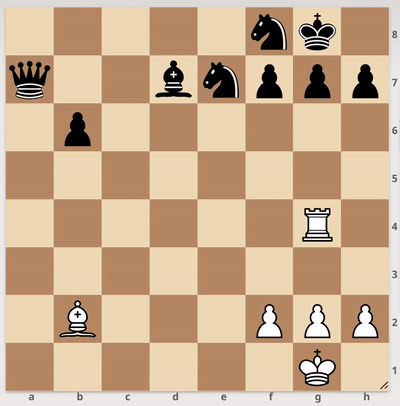
Knights are often the most effective obstructing friendly tools in a windmill attack because they tend to hit several unpositionally aligned targets. The windmill describes the friendly piece blocking the line of fire as the blades and the piece delivering the checks as the focal point.
Its to-and-fro motion further clarifies its name. The piece leaves the line of fire to capture an opponent piece, comes back to deliver a check, forces the attacked king to seek protection from its blockade, and leaves the line of fire again.
The Double-Check
The only way to escape a double-check is to move the king because a double-check uses two pieces to deliver separate checks. To create a double-check, the attacked king must be in a position to suffer a discovery attack.
A double-check has its chess notation given as ++.
The Indirect Defender
This tactic is an intermediate to an advanced tactic where a piece is seemingly sacrificed to execute an attack. The sacrifice, if accepted, will put the capturing piece in a position of a discovery attack.
A player must first find a tactical motif from the direct attacking piece to use the Indirect defender tactic. Then regardless of the piece protecting the square, the attacking piece must make a move as if it were directly defended to occupy that square.
If this attacking piece is captured, an obstructing friendly piece will move out of the prospective protective line of the discovery piece and either deliver a check or make a capture.
Then the enemy piece that captured the attacking piece will be attacked.
6. Undermining
Undermining is a chess tactic that means removing the defender. Some tactics remove the defender under the Undermining Chess tactic, such as;
- Overloading
- Deflection
- Attraction
- Decoy
Overloading
This chess tactic is used when a piece is defensively overloaded. For instance, a bishop protecting two pieces on a diagonal while protecting a key square on another diagonal will likely be overloaded.
The opponent will likely respond by exploring one “defended” opportunity, as they are not defended in a real sense. A piece could be lost without compensation if there is a greater threat, like a checkmate.
This event can be likened to a situational pin in which the pseudo-defender cannot recapture its supposedly defended piece. Therefore, to efficiently explore the overloading tactic, a player must consider the gravity of each threat.
Deflection
This chess tactic also falls under the undermining tactic because it involves forcefully repositioning a defender. A deflection is often used among a combination of chess tactics.
Attraction
This tactic is extremely similar to the deflection tactic. The major difference between the deflection tactic and the attraction tactic is that a deflection tactic intends to reposition a piece anywhere from its initial square. In comparison, the attraction tactic draws the piece to a particular square.
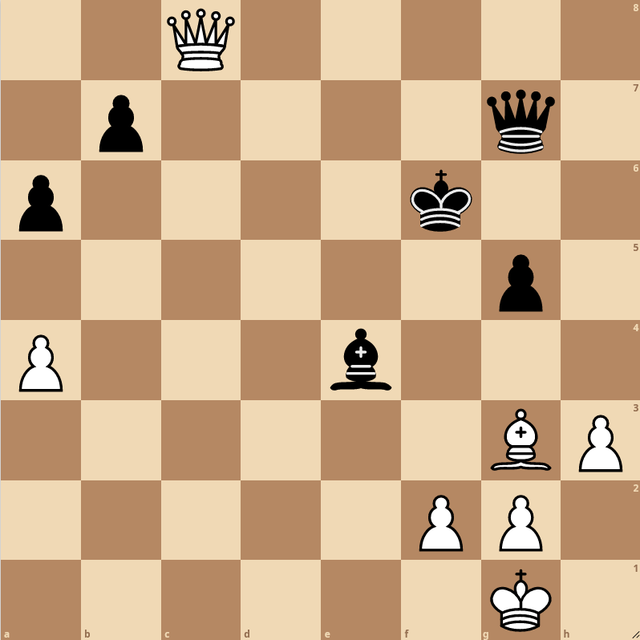
Once again, the attraction tactic is commonly found in combinations where a piece is often sacrificed. It is seen in the Tennison Gambit. In rare cases, an attraction tactic and a deflection tactic can be used interchangeably.
Decoy
This tactic is one of the undermining chess tactics that usually occur in combinations. It involves luring a piece to a particular square, making it less effective.
A decoy tactic can also be seen in chess endgames. The most common example is a king trying to chase down two pawns four files apart.
Interference
By its name, this chess tactic interferes with a piece’s defense by imposing an enemy piece in the line of defense. The interference tactic aims to leave a piece or pair of pieces vulnerable to attacks.
In most cases, an interference tactic is executed through the aid of a sacrifice.
7. Sacrifices
A sacrifice is any move that gives up a piece in exchange for a greater material, positional advantage, or checkmate. Sacrifices are used in several chess tactics, such as undermining and interference. The following chess tactics are mostly based on sacrifices;
- Desperado
- Pawn Tactics
- Draw Tactics
- Clearance
Desperado
A desperado is a chess tactic that is defined in two ways. It can be described as when a trapped piece captures a defended piece of lesser value to compensate for its potential capture. This tactic is a tempo move similar to a Zwischenzug.
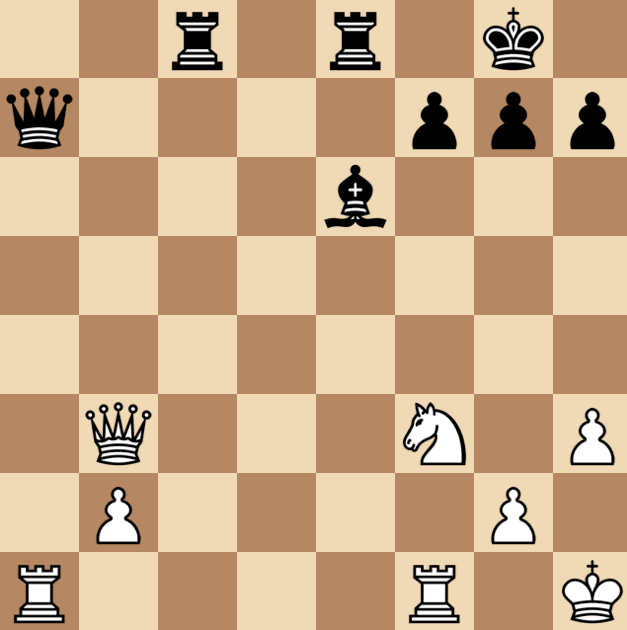
A desperado can also mean sacrificing a piece to attain a draw in an unfavorable position.
Pawn Tactics
Because pawns are the least valuable entities on the chessboard, they are often sacrificed in several sacrificial tactics such as interference, opening gambits, etc. However, two pawn tactics stand out;
- Breakthrough
- Passed pawn
- Poisoned pawn
Breakthrough
A pawn breakthrough chess tactic describes an event where a pawn or a couple of pawns are sacrificed to weaken an opponent’s defensive structure by altering the connectivity of the pawns.
In some cases, a pawn breakthrough gives rise to passed pawns. In other cases, the pawn breakthrough makes the weakened pawns vulnerable to attacks.
Passed pawn
A passed pawn is any pawn with no enemy pawn in front of it, neither on its file nor on either file lateral to its file. A pawn breakthrough can create a passed pawn, but passed pawns are only partially dependent on pawn breakthroughs.
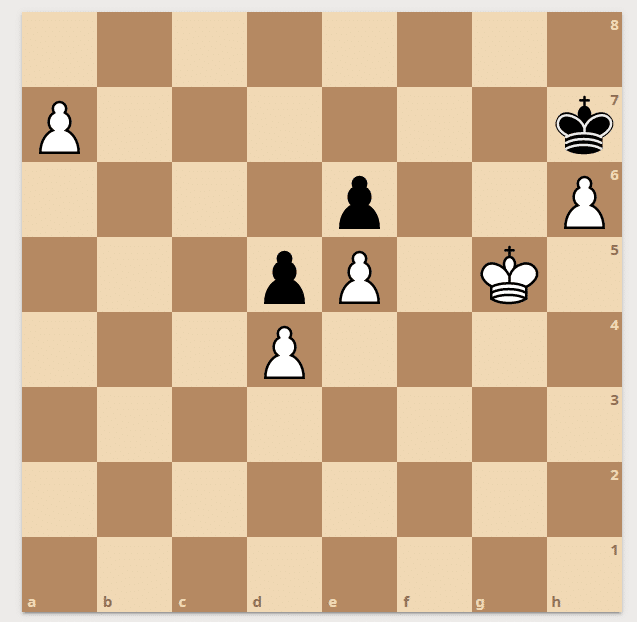
Because of the promotion rule, passed pawns are considered a chess tactic, especially in the endgame. If a pawn reaches the back rank of the opponent, they get promoted to any officer of their choice barring the king.
Connected passed pawns are an even greater threat in a game.
Poisoned pawn
A poisoned pawn refers to any pawn that would decrease a player’s winning chances when captured. Poisoned pawns lead to a domination tactic, a loss of tempo, a deflection tactic, etc.
Draw tactics
A draw tactic is a category of chess tactics that aim to force a draw in an uncertain or significantly unfavorable position.
Perpetual Checks
A perpetual is when a king in enough space is checked repeatedly until a draw by threefold repetition is achieved. A constant feature of endless checks is the inability of the attacking piece to be captured, nor can its attacks be blocked by another piece.
This pestery leaves the last response to a check: removing the king from the line of attack. As soon as the attacked king is moved, the attacking piece delivers another check, and there is a back-and-forth motion.
Perpetual checks are common when a king is on the back rank and there is a piece, usually a pawn, in front of it. The king is then forced to switch between the back-rank and an extreme file.
Suicide Sacrifice (Desperado)
The suicide sacrifice is a desperado move that salvages the game in an unfavorable position. Typically, neither the king nor
the pawns left, if any, will be able to make any legal moves.
Therefore, the losing side must look for ways to forcefully discard its officers to be left with no legal moves on their turn. If a suicide sacrifice is successful, it’ll be a draw by stalemate.
Learn more here:
8. Clearance
A clearance is a sacrificial move that takes a piece off its initial square to a square that triggers the opponent’s weakness to create room for another piece to occupy its initial square.
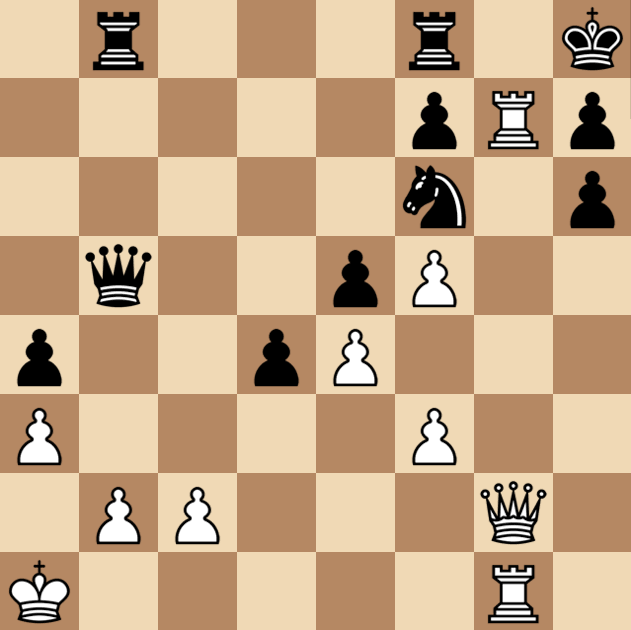
This tactic is similar to the discovery attack, but in this case, a friendly piece blocks the occupation of a square and not a line of attack.
9. Domination
Domination is a chess tactic that involves controlling the mobility of enemy pieces. In other words, a dominated piece is a trapped piece.
10. Underpromotion
Underpromotion is one of the rarest chess tactics because a player must pass up the chance to promote a pawn to a game-winning piece like a queen. Underpromotion is a promotion to every other officer aside from the queen.
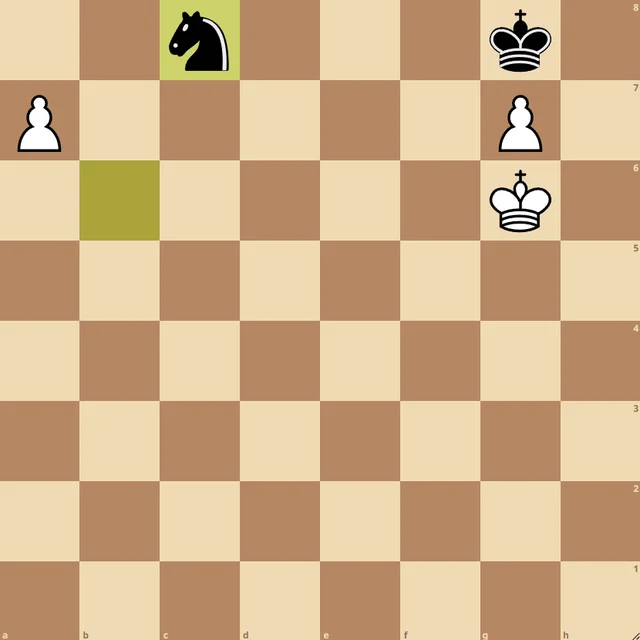
Underpromotion aims to achieve an immediate tactical idea like a fork or a skewer or to avoid a draw by stalemate.
Learn more here: What is Underpromotion In Chess?
11. Tempo Tactics
These chess tactics involve the preservation of tempo. That is when a player achieves a desirable result in the fewest moves possible. Tempo tactics include the Desperado tactic, Zugzwang, Zwischenzug, etc.
Zugzwang
Zugzwang is a state whereby the player whose turn it is to make a move is at a disadvantage regardless of what move they make. Due to fewer pieces in the endgame, Zugzwang is commonly experienced in the endgame.
Zwischenzug
This move, otherwise called an intermezzo or an in-between move, skips the obvious move, usually a recapture, to play a move that gains tempo. A Zwischenzug move poses a greater threat than the expected move, although the expected move remains within grasp.
12. Endgame Tactics
Although most chess tactics are played in the middle game, endgame tactics are chess tactics used exclusively in a game’s endgame phase. A passed pawn is often an endgame tactic but can also occur in the middle game. Major endgame tactics include;
- Triangulation
- Blockade
Triangulation
This tactic is performed exclusively in the endgame and puts the player on the receiving end in Zugzwang. It is commonly used in the endgame, with a king navigating across three squares (triangle) and gaining a crucial tempo.
Blockade
A blockade is a tactic that halts the advancement of a passed pawn. A blockade is most effective when the piece obstructs the passed pawn and threatens other squares. Therefore, knights are dubbed the best blockaders.
5 Common Motifs/Triggers Behind Chess Tactics
Back-rank Weakness
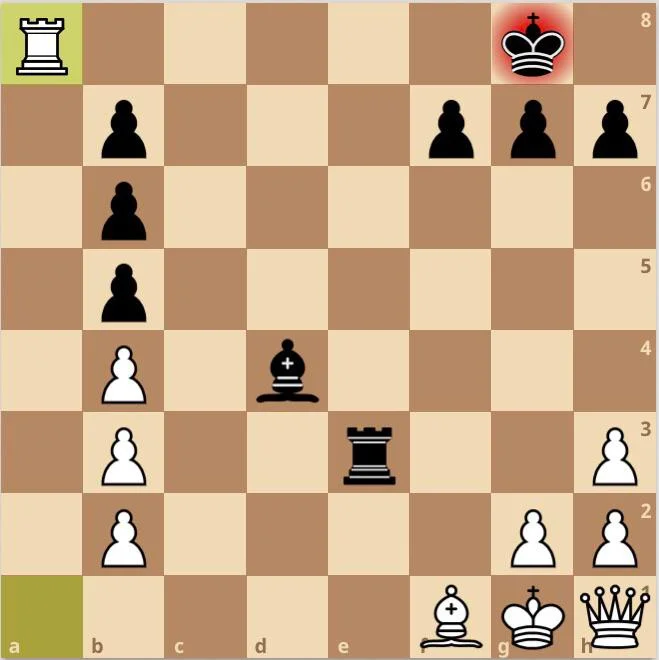
A back-rank weakness is caused by a limitation of flight squares for the king. This weakness is often exploited using sacrifices.
Simplification
To simplify a position is to exchange pieces to achieve a slightly favorable position to convert the slender lead into a win.
7th Rank Attack
The 7th rank (before a side’s back-rank) is the second most sensitive rank for each side because the king, who resides on the back-rank, can be easily enclosed when an enemy controls the 7th rank.
Poor Development
Poor development leads to positional weaknesses that can be exploited using tactics like domination, undermining, pins, forks, etc. A player must always ensure that pieces are strategically and harmoniously placed. And to achieve positional accuracy, calculative depth must be sound.
Frail King Safety
King safety is one of the most important strategies in chess, and if poorly upheld, it can lead to the use of several chess tactics, such as the f-pawn weakness and the Greek Gift sacrifice.
The f-pawn is a target because it is the kingside pawn that is least protected before castling. However, the Greek Gift also targets a pawn but this time, on the extreme files of the board when a king has been castled.
The Green Gift is executed using a bishop sacrifice, and it aims to launch an attack on the castled king by weakening the pawn structure around the king.
You can watch most of these traps here:
Conclusion
Understanding chess tactics is a major component of what sets aside the playing strength of chess players. To become a better player, one must study chess tactics.
The Encyclopedia of Chess Middle Games is a book that further breaks down the core concepts of middle game positions and tactical explorations.
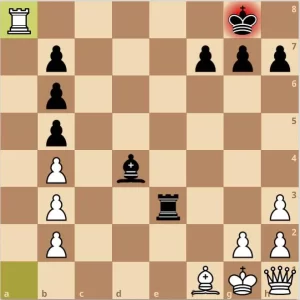



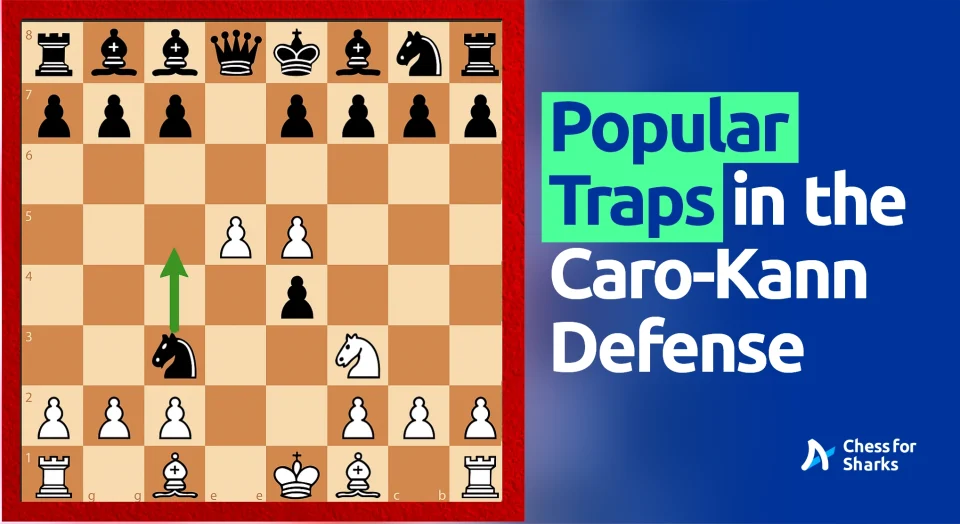

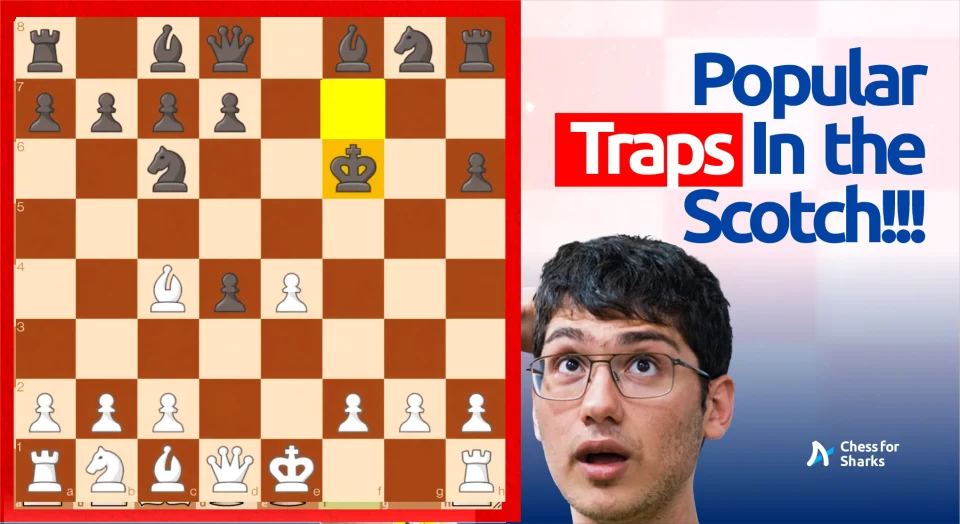
1 comment
whoiscall
Good post!